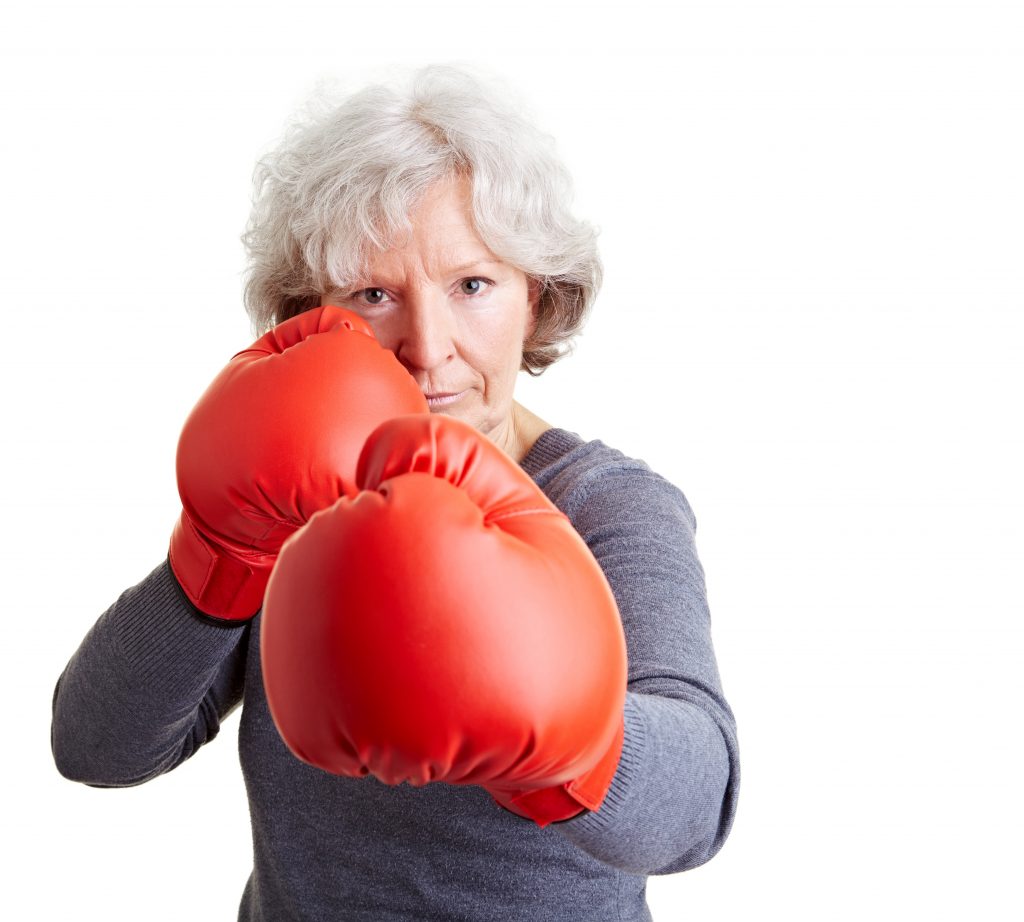April 18 2017
Hands up, who’s read a news article or a blog post on osteoarthritis before? Plenty has been written, so there’s a good chance you’ve heard a bit about it already. So it would come as no surprise that osteoarthritis is extremely common. Joint pain and stiffness from osteoarthritis can be debilitating and significantly reduce mobility and quality of life (McKenzie and Torkington, 2010).
Hopefully in this article we might have some information that you haven’t heard before, or a helpful new perspective. After all, there’s nothing worse than your arthritis stopping you from hiking somewhere beautiful to play the flute!
Diagnosis of Osteoarthritis
Osteoarthritis is diagnosed through a clinical examination. It can be helpful to have plain X-Rays to add to the clinical picture, but it is not always required. It is important to note that the degree of osteoarthritis demonstrated on X-Ray does not correlate well with severity of pain. Many people unknowingly have osteoarthritis, as they have no pain! Increasing age, joint pain, stiffness, muscle weakness, swelling, low levels of physical activity, obesity and restriction of mobility can all be features of the problem. Other problems can co-exist in people with osteoarthritis including heart disease, high blood pressure and diabetes. (Bennell and Hinman, 2011)
Unfortunately, we can’t do anything about ageing, time marches on for all of us! Luckily, as osteoarthritis is such a common problem, the wonderful people out there in research land have looked into how we might best influence the variables in osteoarthritis that are within our control. The job of health professionals is to take the results of research evidence and put them into practice, modifying the risk factors for symptomatic osteoarthritis in our patients. We also like to remind patients that their painful hip isn’t any older than other non-painful parts of their body, so other factors are surely at play!
Guideline for Management of Osteoarthritis
A guideline for the diagnosis and management of osteoarthritis (in the hip and knee) has been produced by the Royal Australian College of General Practitioners (RACGP) in association with the National Health and Medical Research Council (NHMRC). This guideline is a great resource for clinicians, with recommendations for treatments that have good supporting evidence behind them. Treatments are given a recommendation grade from A (excellent supporting evidence) to D (weak supporting evidence). Unless you’re having issues sleeping, the guideline is a tough read, so here’s our take on the best evidence available.
Management options are divided into either surgical or conservative (non-surgical). Conservative treatment can be further divided into pharmacological (medications) or non-pharmacological. Our area of expertise as physiotherapists is in non-pharmacological, conservative treatment of osteoarthritis. The evidence for our best treatments is pretty good, but it can be complex and not always easy to put into practice.
Achieving successful outcomes in managing osteoarthritis (and many other musculoskeletal problems) comes down to doing the important things well. As a little detour, the Pareto Principle gives some valuable insight into how this should work.
The Pareto Principle
The Pareto Principle is also known as the 80-20 rule. It has it’s origins in population, wealth and business. The rule can be summarised by the assertion that 80% of the effects in any given situation can be attributed to 20% of the causes. We think this lends itself well to the world of physiotherapy, and the choice of the most effective treatments, as guided by research evidence. In relation to osteoarthritis the ‘Big Ticket’ items represent the 20% of causes that will bring the 80% of effects, the biggest return for investing in treatment.
Effective Treatments for Ostearthritis – the ‘Big Ticket’ items
Get these ‘right things’ right and that 80% return on your investment will start to look pretty good.
Exercise (Grade B)
Increasing physical activity in people with osteoarthritis can reduce pain and increase capacity for functional activities, e.g. walking. Exercise doesn’t have the potential side effects of pharmacological treatments and there aren’t too many situations where it can’t be prescribed safely. Land based activity involving aerobic exercise or strengthening can be equally effective. If weight bearing exercise is too difficult or painful, modifications to the plan such as hydrotherapy or non-weight bearing strength exercises can be successful alternatives. (Bennell and Hinman, 2011)
The trouble is that people often have barriers to begin exercising and maintaining activity levels. It is especially difficult to get back into things if you lapse into inactivity. Discovering and addressing these barriers is essential to starting and sticking to an exercise plan. But advice to simply ‘do more exercise’ isn’t always that helpful. Finding out what is important to the person with osteoarthritis is essential. Where possible treatment should be aimed at getting people back to the things they love doing. Doing exercise at home or in a group can be equally effective, but sometimes having some supervision is helpful. Activities that are enjoyable and match people’s interests are the best. It makes sense that this has to be tailored to the individual. (Bennell and Hinman, 2011)
The ability to stick to a consistent exercise plan is the best predictor of a successful outcome in treating osteoarthritis. (Bennell and Hinman, 2011) Motivation is what gets you started, and habit is what keeps you going. Fun habits are easy to stick to!
Pain education
This isn’t in the guideline, but we think it fits in here to help people get started. Getting started doing exercise can be the furthest thing from your mind when you’re in pain. Fear of doing further damage to an arthritic joint or fear of experiencing more pain can be significant in holding people back from exercise. The key here is finding the right starting point. Too often the volume or intensity of exercise in the early stages is too high. In the hurry to be rid of pain yesterday, enthusiasm and vigor with exercise can lead to overload and flare-ups. In this situation it’s easy to conclude that exercise is bad!
Pain is a brain generated sensation. In osteoarthritic joint pain the brain concludes there is more credible evidence of danger for the affected joint than credible evidence for safety (Butler and Moseley, 2015). Too much loading is likely to be evidence for danger, but loading arthritic joints just enough can be beneficial, providing evidence for safety. Some pain with exercise is ok, provided it is not too intense and eases off relatively quickly. This type of safe loading ultimately has an effect on your brain’s perception of the arthritic joint and reduction in pain. This is extremely important, as the reduction in pain is not due to a reduction in the degree of osteoarthritis. Just as the degree of osteoarthritis on X-rays isn’t great at predicting pain, the effectiveness of exercise as a treatment is independent of the severity of osteoarthritis on X-ray. This is really encouraging for potential success! (Bennell and Hinman, 2011)
So a thorough assessment, good listening and a healthy dose of creativity can produce a fun program of exercise that’s easy to stick to, provides some comfortable joint loading and results in gains in strength and fitness. The goal with exercise is to improve, so the plan needs to be progressed over time, with graded increases and shifting of goalposts!
Weight loss (Grade B)
Obesity and overweight is a well recognised risk factor for symptomatic osteoarthritis. Increased mechanical stress and inflammation results in pain, and weakness in muscle and bone. This contributes to a cycle of inactivity and reduced functional capacity. Being overweight makes regular daily activities more difficult. Try carrying around 5-10kgs for a few minutes, let alone days, and you’ll see how much more you have to exert yourself. A study published in the US in 2005 found a four-fold reduction in load on the knee joint for every pound (0.45kg) of weight lost by overweight and obese study participants with osteoarthritis. (Messier et al, 2005)
But, just as the advice to simply ‘do more exercise’ isn’t always that helpful, neither is advice to simply ‘lose weight’. Despite the abundance of young skinny people blogging, instagramming or writing books about weight loss, it is actually really tough. It’s easy to feel hopeless with it, especially with getting started and overcoming obstacles along the way.
Losing weight requires a combination of diet and exercise. It’s simple in theory and difficult in practice. Best results are likely to be achieved with seeking the help of trained, up to date professionals – dietitians and physiotherapists. Dietitians are the experts in diet. There are plenty of good ones out there. If you want to make long lasting change to your health in this area, a consultation will be well worth the investment. Contact us for a recommendation of a great Adelaide based dietitian near you. We also follow Sports Dietitians Australia and Thinking Nutrition through their Facebook accounts, their updates are fantastic.
Exercise has multiple, well documented health benefits including improving cardiovascular fitness, sleep quality, increasing energy levels, reducing the risk of chronic disease (e.g. heart disease and diabetes) and improving mood. Management of healthy weight is another benefit, but even if you don’t lose weight, in relation to prevention of musculoskeletal pain and maintaining cardiovascular fitness, you are far better off being an active overweight person, than inactive.
Multi-modal Physical Therapy (Grade C)
In the RACGP guideline multi-modal physiotherapy refers to the varied combination of treatments used by physiotherapists aiming to improve range of motion, flexibility and strength. This can include manual therapy (joint mobilisation, soft tissue therapy), stretching, mobility and strengthening exercises. In practice, manual therapy tends to work best in providing short term symptom relief to help people get started or keep going with exercise.
Other non-pharmacological treatments mentioned in the guideline with a grade C (satisfactory) recommendation included aquatic therapy, tai chi, thermotherapy and self management/education programs. These treatments were found to have some evidence, but care was suggested with their application in clinical practice.
The Challenge
A review has recently been conducted of Australian GP management of osteoarthritis after the publication of the RACGP guideline. The review suggested that non-pharmalogical interventions (as we have discussed in this post) remain underutilised and are not given the importance the guideline suggests. (Basedow et al, 2015)
We think this represents a great challenge for physiotherapists!
High quality supporting evidence suggests that treatments for exercise and weight loss must be the foundations of non-pharmacological management of osteoarthritis. Hopefully we have highlighted the important factors to address when incorporating these treatments into effective management plans.
If you have symptomatic osteoarthritis, please contact us, we’d love to help. There’s no better reward for us than to see our patients get fit, strong and back to their favourite activities!






